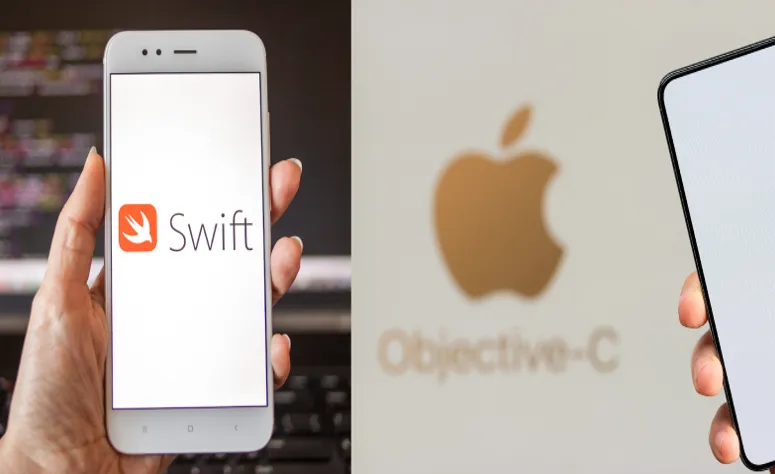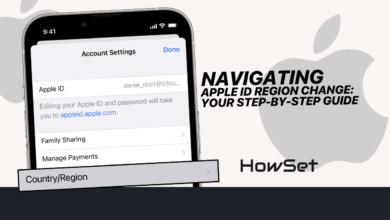
Swift vs Objective-C: Understanding The iOS Comparison
In the realm of iOS app development, choosing the right programming language is crucial for the success of a project. For years, mobile app developers have debated the merits of Swift versus Objective-C, each with its strengths and weaknesses. In this comprehensive guide, we’ll delve into the nuances of these two languages, explore real-world examples, and provide a unique perspective for business owners considering using dedicated offshore teams.
The Battle of Titans: Swift and Objective-C
Objective-C has long been the stalwart of iOS development, rooted in the history of Apple’s software ecosystem. Its syntax, heavily influenced by Smalltalk, has powered countless apps since the early days of the App Store. However, with the introduction of Swift in 2014, Apple sought to revolutionize how app developers create iOS applications.
Swift: The Modern Marvel
Swift burst onto the scene with promises of safety, speed, and modernity. Its concise syntax and powerful features quickly endeared it to app developers worldwide.
Moreover, Swift’s memory management model, based on Automatic Reference Counting (ARC), relieves developers of the burden of manual memory management, reducing the likelihood of memory leaks and crashes.
Swift offers a more intuitive, safe, and efficient way to develop iOS applications. Its concise syntax, modern features, and strong typing make it the most preferred option for developers worldwide.
Pros of Swift:
Readability and Conciseness: Swift’s clean and expressive syntax makes code easier to read and write, reducing the likelihood of errors and improving developer productivity.
Safety and Performance: Swift incorporates modern programming concepts such as optional, type inference, and memory safety, reducing the risk of runtime errors and improving app performance.
Interoperability: Swift seamlessly interoperates with existing Objective-C code, allowing developers to leverage the vast ecosystem of iOS libraries and frameworks. Such seamless operation between both frameworks, therefore, can prove to be a game-changer for a business owner with legacy applications built with Objective-C looking to hire Swift app developers who are both experienced and thorough in Swift to keep up with the rising demands of their clients.
Cons of Swift:
Learning Curve: While Swift’s syntax is designed to be approachable, developers must learn new concepts and best practices, especially for those transitioning from Objective-C.
Tooling and Community Support: Despite significant improvements since its introduction, Swift’s tooling and community support may not be as mature as Objective-C’s, leading to occasional challenges and limitations.
Objective-C: The Battle Veteran
Despite Swift’s prominence, Objective-C remains a formidable contender in the iOS development landscape. Its rich history, extensive libraries, and mature tooling make it a compelling choice for many mobile app developers and business owners.
Pros of Objective-C:
Maturity and Stability: Objective-C has a long history of use in iOS development, with extensive documentation, tooling, and community support. This maturity makes it a reliable choice for building scalable and maintainable applications.
Legacy Codebases: Many businesses have existing Objective-C codebases and experienced Objective-C developers, making it easier to maintain and extend legacy applications without needing a complete rewrite.
Cons of Objective-C:
Verbose Syntax: Objective-C’s syntax can be verbose and less intuitive than Swift’s, leading to longer development cycles and potentially increased cognitive load for developers.
Manual Memory Management: Unlike Swift, Objective-C requires developers to manually manage memory using techniques such as reference counting manually, increasing the risk of memory leaks and crashes.
For business owners considering the choice between Swift and Objective-C, several factors should be taken into account:
#1 Business Goals and Timelines:
Swift’s modern features and streamlined syntax may offer development speed and efficiency advantages, particularly for projects with tight deadlines or rapidly evolving requirements.
#2 Existing Infrastructure and Talent
If your business has a substantial investment in Objective-C codebases or a team of experienced Objective-C developers, sticking with Objective-C may be a more practical choice to ensure continuity and minimize disruption.
#3 Scalability and Flexibility: Leveraging dedicated offshore teams can give businesses access to a global talent pool, allowing them to scale their development efforts quickly and cost-effectively. Whether using Swift or Objective-C, offshore dedicated developers from trusted, award-winning firms like code clouds that operate from the US, India, New Zealand, and Australia can help you augment their internal teams and accelerate project delivery.
In conclusion, the choice between Swift and Objective-C ultimately depends on your business’s specific needs, priorities, and constraints. By carefully evaluating the pros and cons of each language and considering the unique circumstances of your business, you can make an informed decision that aligns with your goals and sets you up for success in the competitive world of iOS app development. By leveraging dedicated offshore teams, you can further enhance your development capabilities and achieve your business objectives more effectively.




